5. Flatware II

My steps to a diet reset: ritual water fast, carved eating utensils, and dietary commitment devices. You can read the first Flatware post here.
The Craving Mind
You are what you eat. Or, potentially, what you don't.
Over the last week, I used my "Eat Sheet" (a written eating commitment) to follow my clean eating intention with near-perfect adherence. I also learned about food processing definitions (see below) and adjusted my eat sheet to keep with the spirit of my commitment but make it more realistic.

Moving forward, I am eating a mostly whole, mostly plant-based diet. Using the NOVA classification system, I'm okay with items from group 2, such as olive oil, salt, and honey, and occasional/minimal foods from group 3, such as tortillas, smoked meats, or whole-grain bread. And, just as last week, no group 4 ultra-processed foods of any kind. Below is the second iteration of my Eat Sheet.

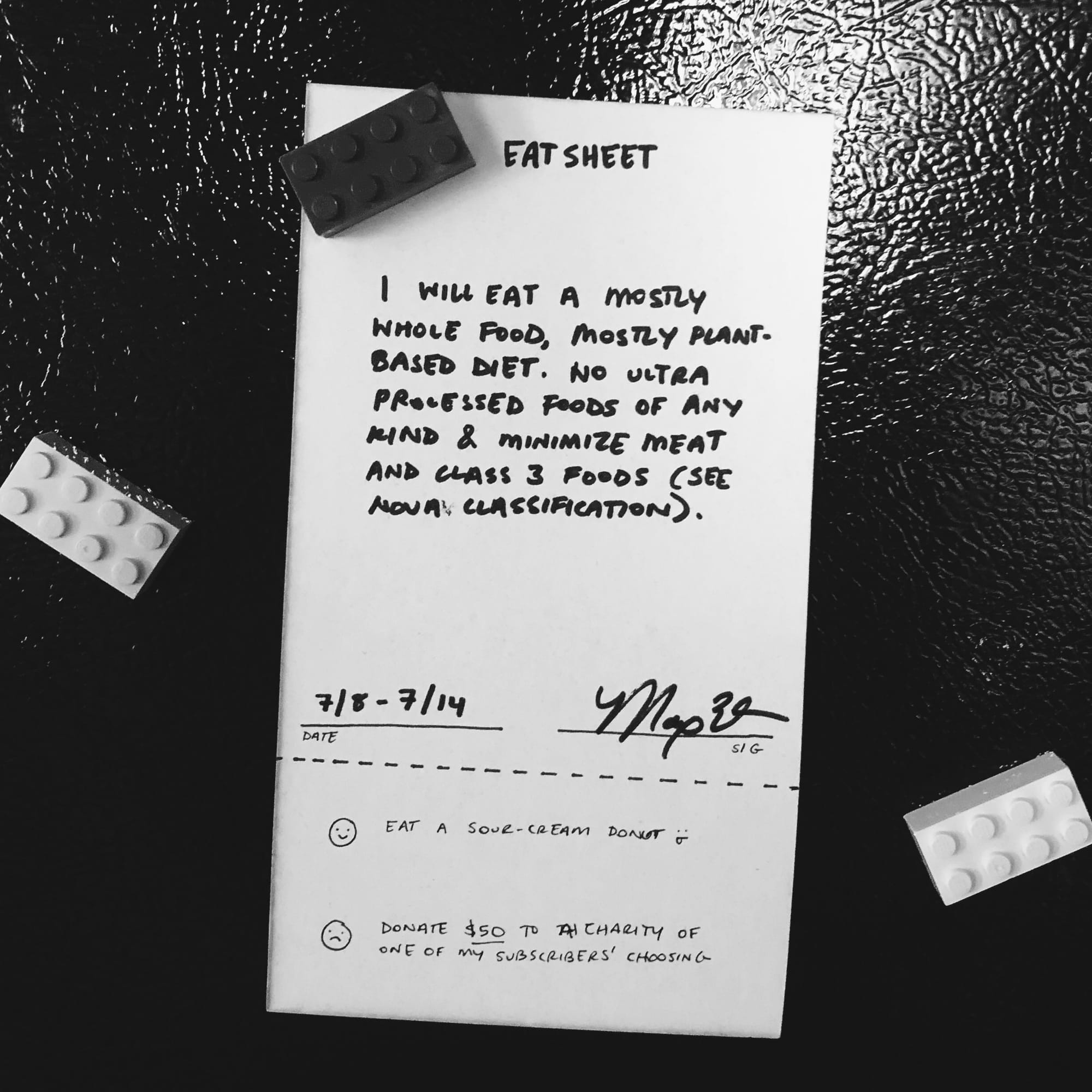
Eat sheet V2. Includes a space for both a penalty and reward for follow through. Sour cream donut.. IYKYK 😋
Making these dietary changes has forced me to face my food cravings. It has also made me realize (again) just how influential environmental factors are in triggering cravings and, as a result, driving unwanted behaviors. From the checkout line at Walgreens (Hot Cheetos) to the Pride parade at Loring Park (Corn Dogs), I've made note of the foods and environments that cause intense cravings. Even writing down my cravings helps them dissipate. That might be mostly because I plan to use this list to reward myself occasionally in the future.
Woodware (flatware)
Moving forward, I'm calling these utensils "woodware." It's more descriptive, straightforward, and alliterative.
Woodware is my first carving project. At first, carving the wood felt awkward. I would chip and fray the wood on every other motion. But I quickly discovered how to work with the grain, removing wood cleanly bit by bit. It felt like some ancient practice or knowledge emerged within me over the week.

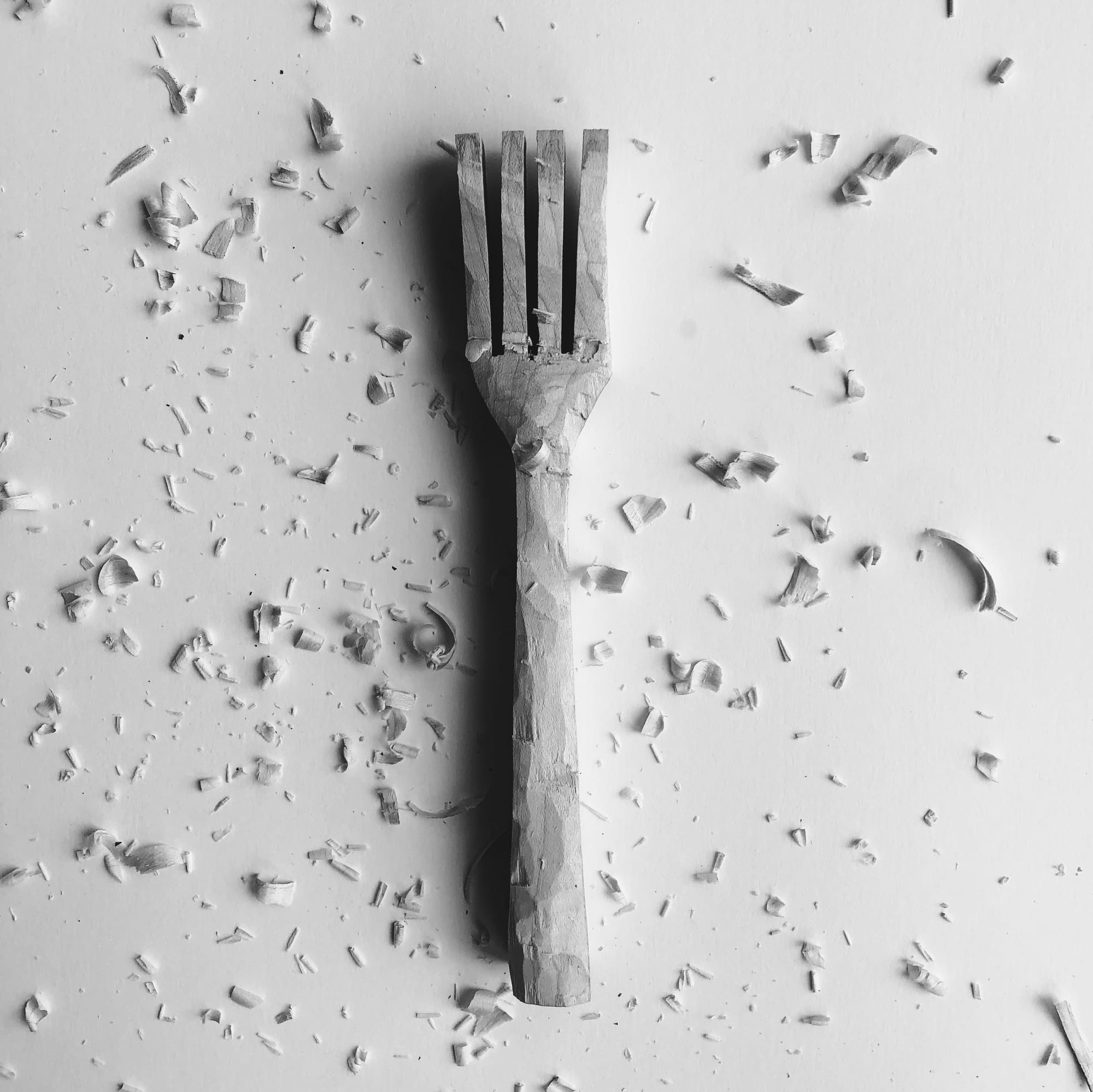
Early process shots of woodware spoon and fork.
Interestingly, I also found the repetitive act of carving and sanding helped soothe my cravings. Making these utensils is meditative. It helps me slow down and (re)remember that cravings come and they go. Just give it time.
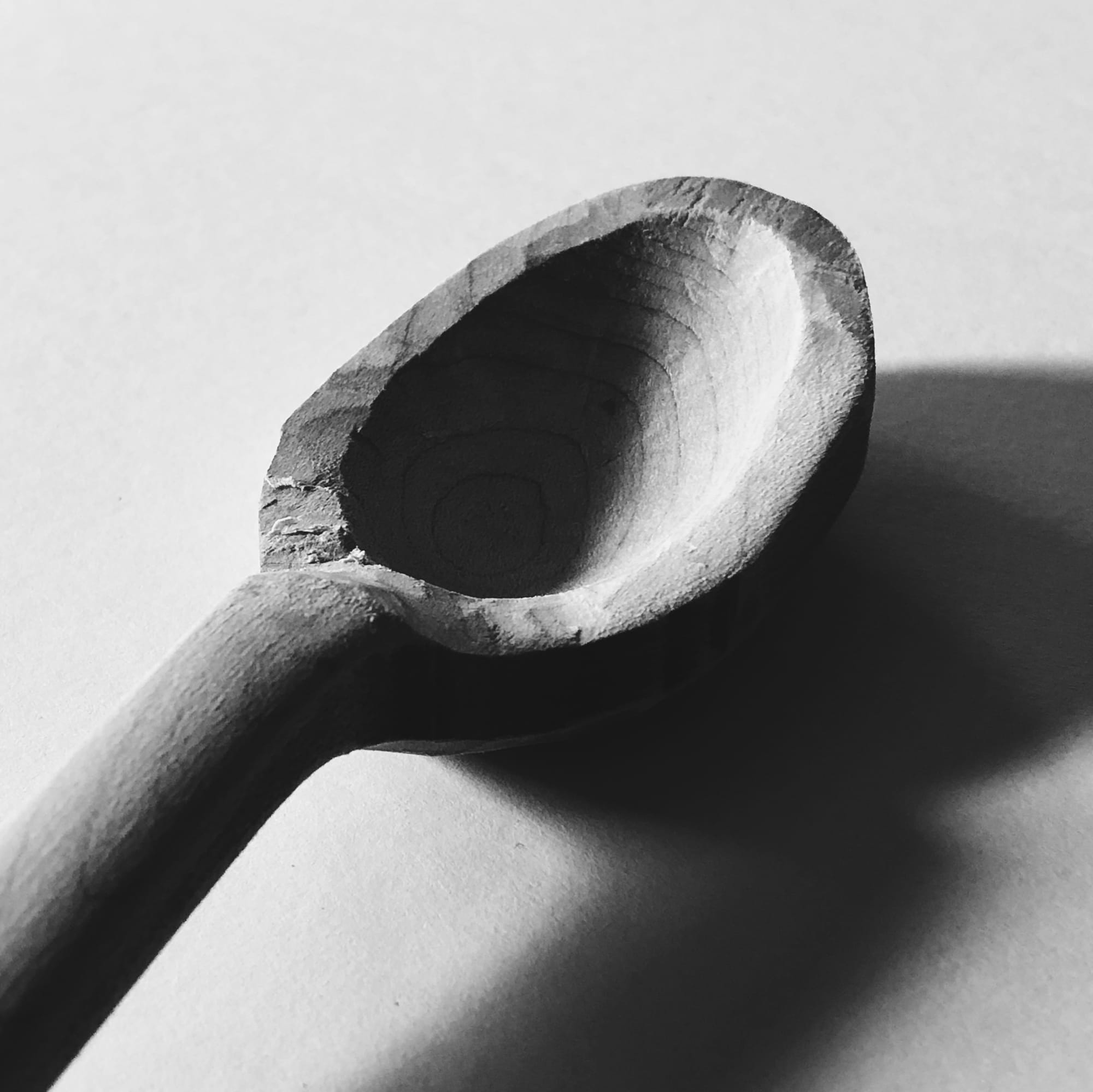
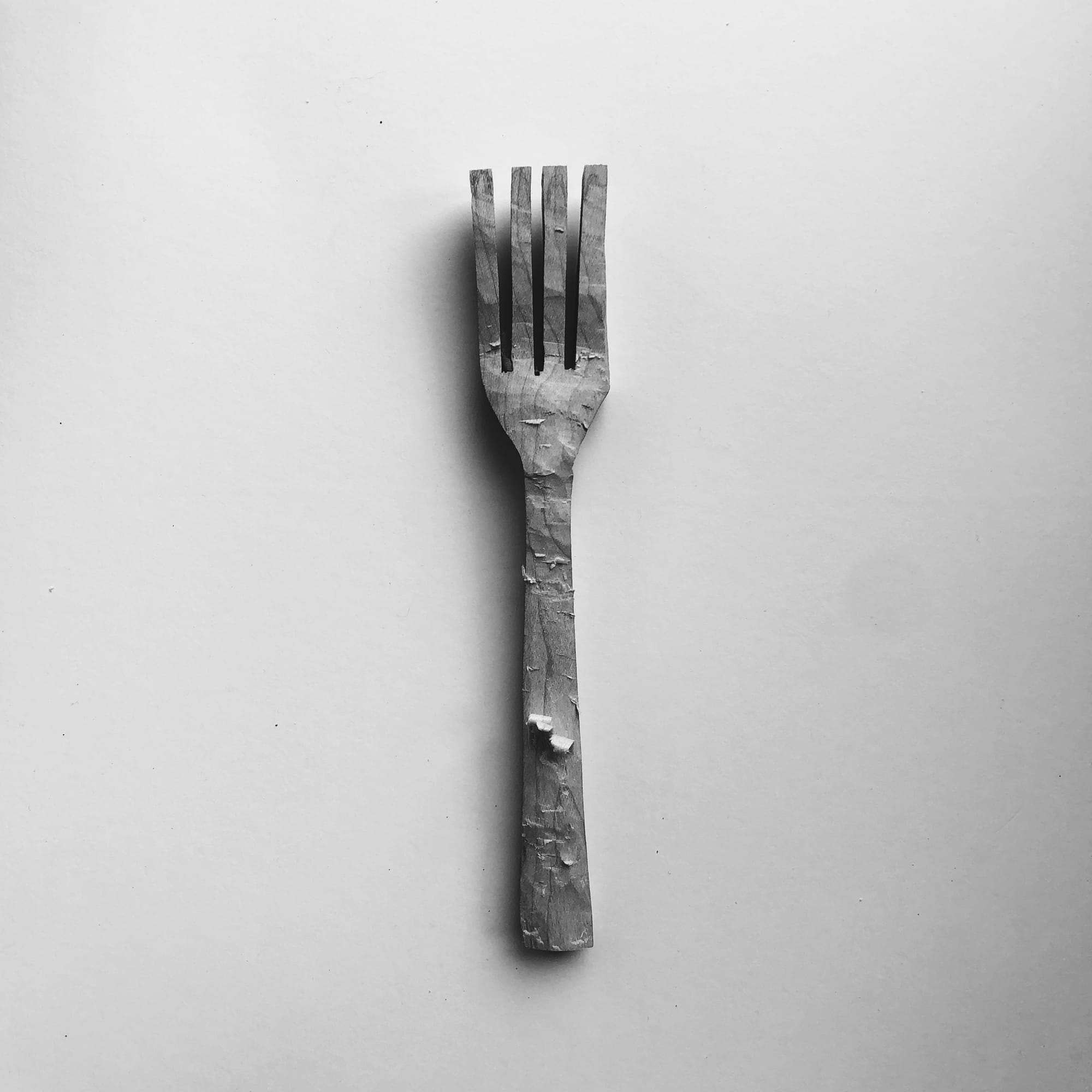
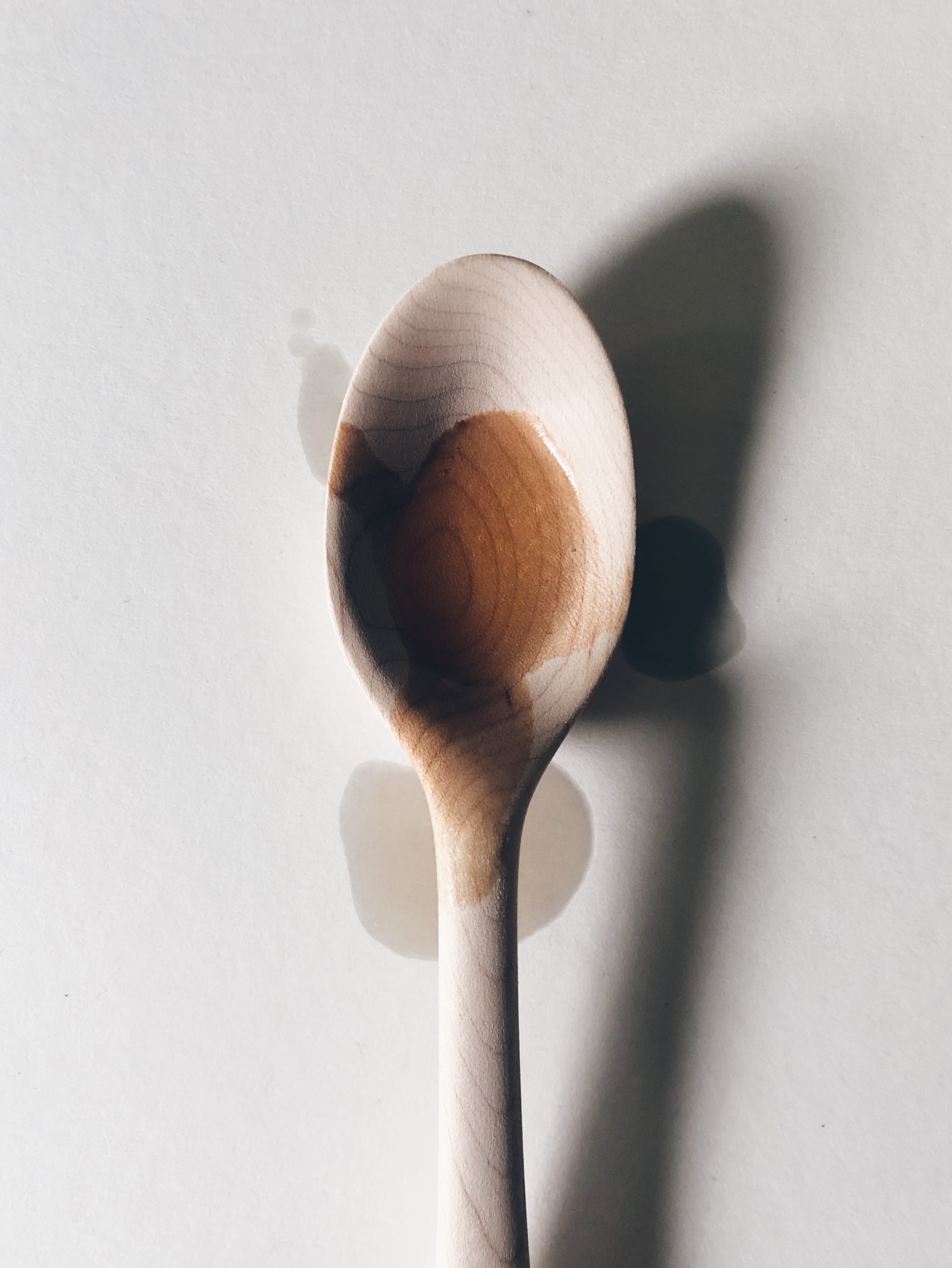
More woodware process shots.
Woodware for all
I've found this project so rewarding that I thought it would be fun to explore how to make this project/process more accessible for others to try. In other words, how might I "productize" woodware so that others can move through the same process of fast, make, and commit?
Later this summer, I plan to create a mocked-up "kit" for woodware. It will include three pieces of blank wood, simple step-by-step instructions, three eat sheets, and the necessary carving tools (which a person can return after they're done).
This project certainly isn't for everyone and that's okay. If no one wants a kit, that's okay. For me, it will be a fun exercise in thinking through the finest details of making a world-class user experience. More on that later!
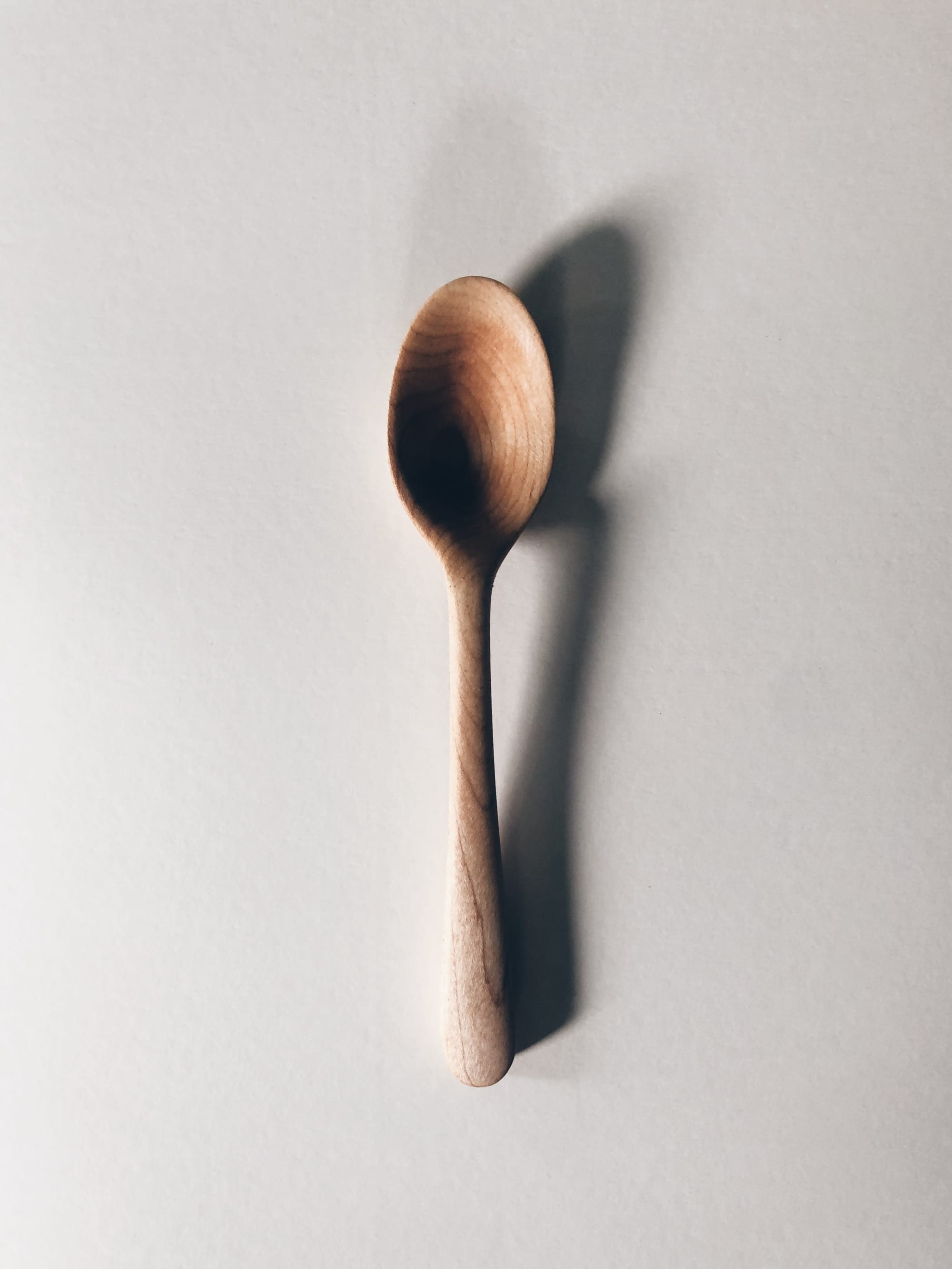
Next Week
I will take a break from Woodware and introduce my take on the Vision Board over the next few weeks. It's a board that evolves to help me always continue dreaming. I look forward to sharing the design, hearing your feedback, and learning what you do to keep your dreams alive.
No spam, no sharing to third party. Only you and me.

Member discussion